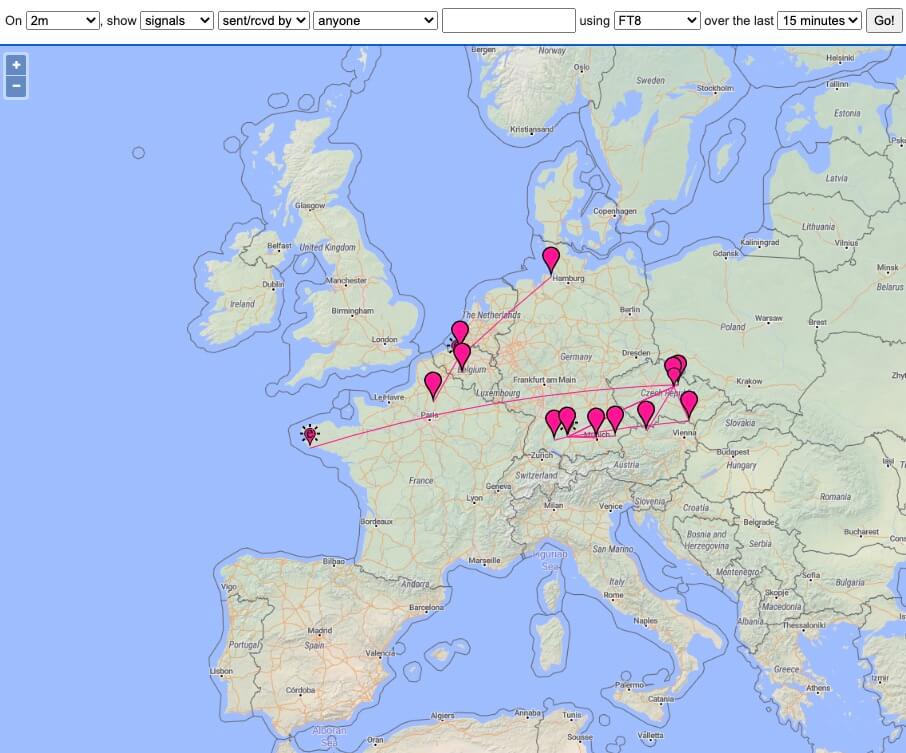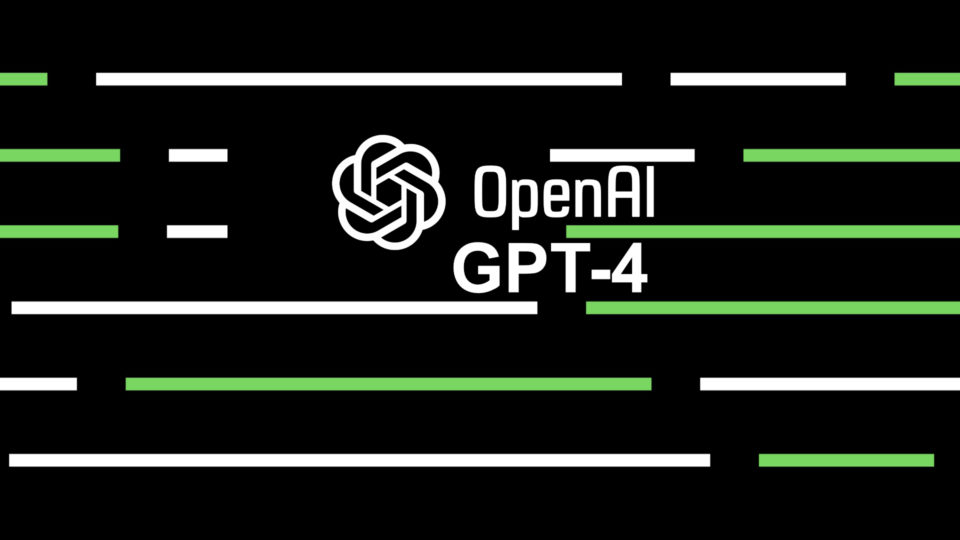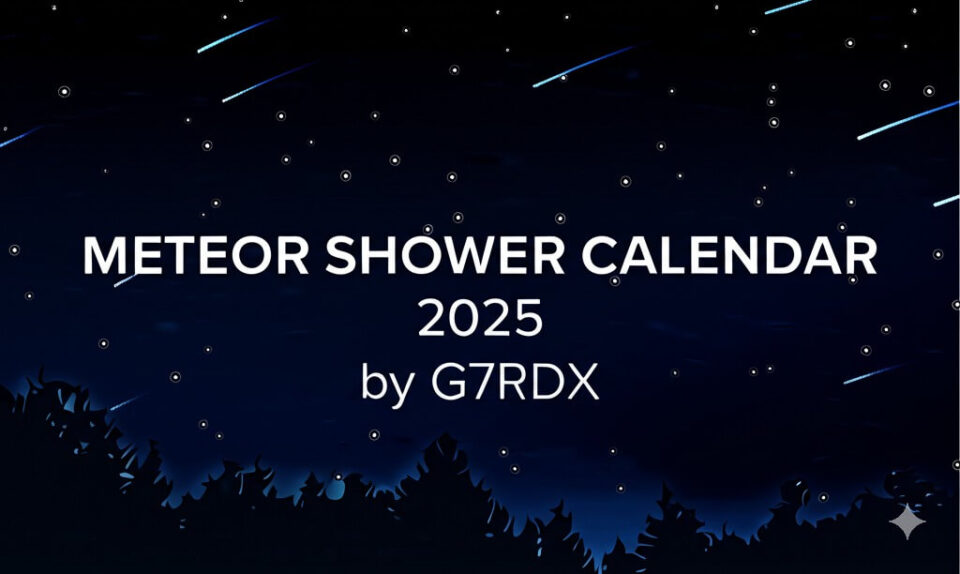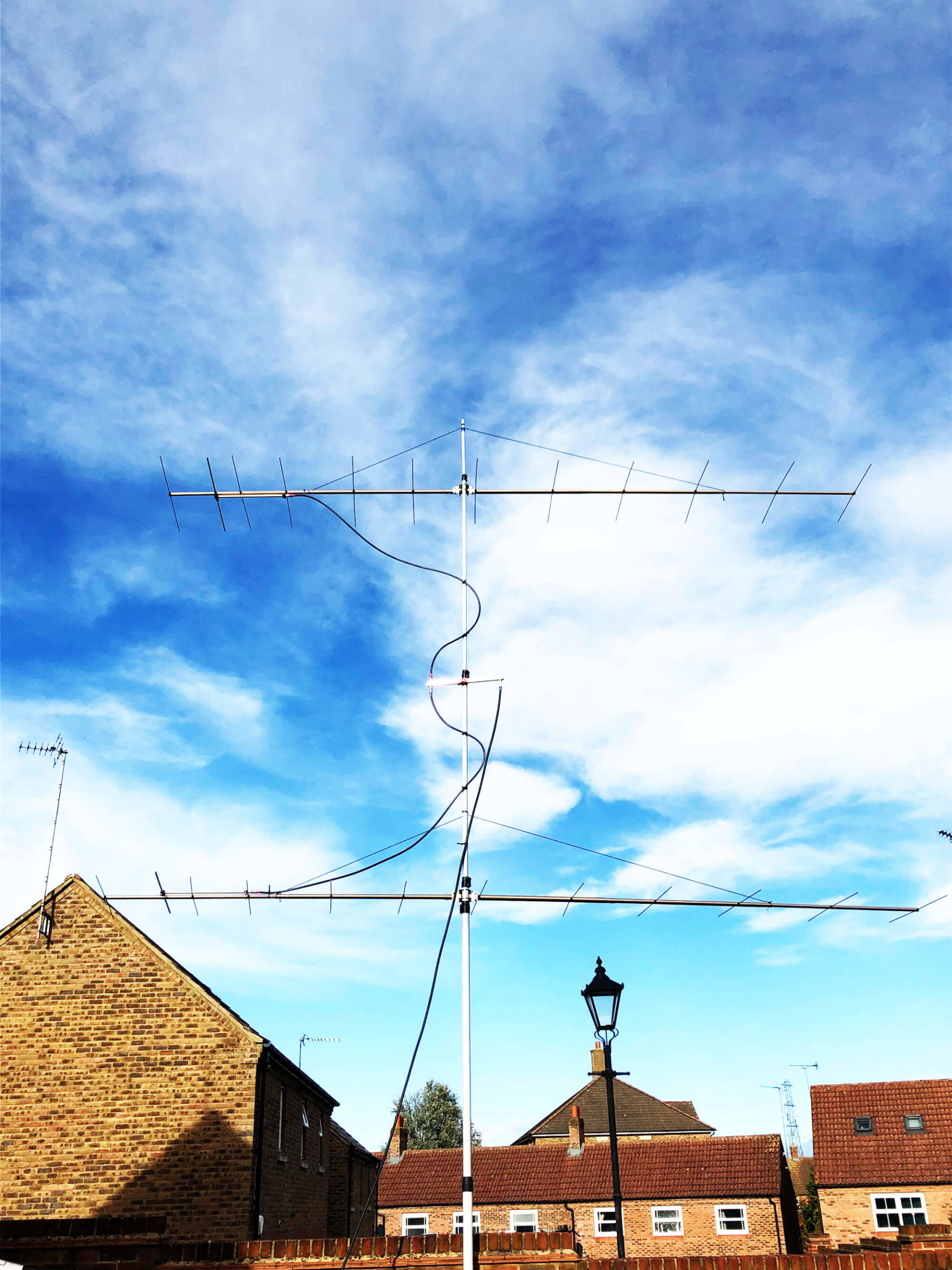Table of Contents
Meteor scatter is an exciting propagation mode that allows amateur radio operators to make long-distance contacts using VHF and UHF frequencies. With the right equipment and software, it is possible to make contacts hundreds or even thousands of miles away. Whether using JT6M, JT65, MSK144, FSK144, or CW, meteor scatter offers a unique and rewarding experience for amateur radio enthusiasts.
How Meteor Scatter Works
Meteor scatter works by bouncing radio signals off the ionized trails left by meteors. These trails are created when the meteor enters the Earth’s atmosphere, and they typically last for less than a second. The ionized trails are created by the meteor’s heat, which vaporizes the surrounding atmosphere, leaving behind a trail of ionized particles.
Radio signals in the VHF and UHF range can be reflected off these ionized trails, allowing them to travel further than they would be able to through line-of-sight propagation alone. The signals bounce off the ionized trail, effectively “skipping” along the Earth’s atmosphere, and can be received hundreds or even thousands of miles away from their original source.
Equipment for Meteor Scatter
To get started with meteor scatter, amateur radio operators need a radio capable of transmitting and receiving signals in the VHF and UHF frequency range. A directional antenna, such as a Yagi, is also recommended to help focus the signal in the desired direction.
Software for Meteor Scatter
Software plays an important role in meteor scatter communications, as it helps to decode weak signals and increase the chances of making a successful contact. Two popular software programs for meteor scatter are WSJT-X and MSHV.
WSJT-X
WSJT-X is a free and open-source software program developed by Joe Taylor, K1JT, that is specifically designed for weak-signal digital communication modes. It supports a range of modes, including JT6M, JT65, JT9, and MSK144, which are commonly used for meteor scatter communications.
For more information on WSJT-X and to download the software, visit the official website at https://physics.princeton.edu/pulsar/k1jt/wsjtx.html.
MSHV
MSHV is another free and open-source software program that supports a range of weak-signal digital communication modes, including FSK441, JT6M, JT65, JT9, and MSK144. MSHV also uses a more efficient modulation scheme than FSK441 and allows for faster contacts.
To learn more about MSHV and download the software, visit the official website at http://lz2hv.org/mshv/.
Both WSJT-X and MSHV have sophisticated decoding algorithms that can recover weak signals that are buried in noise. They also include built-in tools for timing synchronization and frequency calibration to help ensure accurate transmissions.
To use these software programs effectively for meteor scatter communications, it’s important to carefully select the mode, frequency, and timing of transmissions. Meteor shower schedules and forecasts from websites like the American Meteor Society can be helpful in planning communications.
It’s also a good idea to network with other operators who have experience with meteor scatter communications to learn tips and best practices. Amateur radio forums and social media groups can be great resources for connecting with other operators and sharing information.
By using the right software and techniques, meteor scatter communications can be a highly effective way to communicate over long distances with weak signals.
MSK144 and Other Digital Modes
In addition to JT6M, JT65, and MSK144, there are other modes that can be used for meteor scatter communications, including FSK144 and CW.
FSK144 uses frequency shift keying modulation and is designed for higher-speed meteor scatter contacts, while CW uses simple on-off keying and is a popular mode for low-power meteor scatter contacts.
Tips for Successful Meteor Scatter Communications
While meteor scatter propagation can be an effective way to communicate over long distances with weak signals, it does require careful planning and preparation. Here are some tips for making the most of meteor scatter communications:
Meteor Shower Forecasting
To make the most of meteor scatter propagation, it’s important to know when and where meteor showers will occur. Websites like the American Meteor Society can provide schedules and forecasts for upcoming meteor showers.
Timing of Meteor Scatter Communications
Meteor scatter signals are often short-lived, so it’s important to time transmissions carefully. Operators should listen for signals and respond quickly to ensure that they make the most of any available opportunities.
Operating Techniques
To make successful meteor scatter contacts, operators should use proper operating techniques, including accurate timing, the use of directional antennas, and careful selection of radio frequencies and modes.
Networking with Other Operators
Networking with other amateur radio operators who are interested in meteor scatter propagation can be a great way to learn more about the technique and get tips for making successful contacts. Amateur radio forums and social media groups can be a great way to connect with other operators who share your interests.
Meteor Scatter Skeds
ON4KST chat is the best place to find meteor scatter enthusiasts.
To create an account and join the KST chat click this link http://www.on4kst.com/chat/start.php
Experimenting with Different Techniques
Finally, it’s important to experiment with different techniques and equipment to find the best approach for your specific situation. Trying different radio frequencies, antennas, and software programs can help you to refine your meteor scatter communication skills and make the most of this exciting propagation technique.
Meteor Showers dates
Find the best dates for meteor scatter Meteor Showers Calendar 2021 – 2022
Meteor Scatter Frequencies
The frequencies used for meteor scatter communication can vary depending on a number of factors, including the time of day, season, and location. However, there are some frequencies that are commonly used by amateur radio operators for meteor scatter communication on the 6m, 4m, and 2m bands.
On the 6m band, the primary frequency for meteor scatter communication is 50.260 MHz. This frequency is typically used for voice communication, but there is also a segment from 50.260 to 50.280 MHz that is reserved for digital modes like MSK144. The secondary frequency for meteor scatter communication on the 6m band is 50.285 MHz.
On the 4m band, the primary frequency for meteor scatter communication is 70.260 MHz, with a digital mode segment from 70.260 to 70.280 MHz. The secondary frequency for meteor scatter communication on the 4m band is 70.285 MHz.
On the 2m band, the primary frequency for meteor scatter communication is 144.360 MHz, with a digital mode segment from 144.360 to 144.380 MHz. The secondary frequency for meteor scatter communication on the 2m band is 144.385 MHz.
| Band | Frequency | Notes |
|---|---|---|
| 6m | 50.260 MHz | Primary frequency for meteor scatter communication |
| 4m | 70.260 MHz | Primary frequency for meteor scatter communication |
| 2m | 144.360 MHz | Primary frequency for meteor scatter communication |
The Importance of Time Synchronization for Amateur Radio
Time synchronization is a crucial aspect of many applications, including digital modes communication in amateur radio. Accurate timekeeping is necessary to ensure that transmissions are properly timed and received by the recipient.
Time Synchronization Tools for Amateur Radio
There are several software tools available for time synchronization on Windows and other operating systems that can be used for amateur radio purposes. Some popular options include:
Nettime
Nettime is a free, open-source utility that can be used to synchronize the time on a Windows computer with an external time server. Nettime allows users to choose from a list of pre-configured time servers or enter their own custom time server. The software also provides an option to set a time offset to correct for any discrepancies in local time.
To use Nettime for time synchronization, users simply need to download and install the software, select a time server, and click the “Synchronize” button. Nettime will then adjust the computer’s clock to match the time provided by the selected time server.
Website: https://www.timesynctool.com/
Dimension4
Dimension4 is a proprietary utility for Windows that provides automatic time synchronization with a list of pre-configured time servers. Dimension4 can be configured to run at system startup and can also be set to automatically synchronize the time at user-defined intervals.
In addition to automatic time synchronization, Dimension4 also provides a number of advanced features such as support for proxy servers and the ability to synchronize time with hardware-based time sources.
Meinberg NTP
Meinberg NTP is a free, open-source implementation of the Network Time Protocol (NTP) that can be used for time synchronization on Windows, Linux, and other operating systems. NTP is a protocol used to synchronize the clocks of computer systems over packet-switched, variable-latency data networks.
Meinberg NTP can be configured to synchronize with a variety of time sources, including GPS-based time sources and radio clocks. The software also provides a number of advanced features, such as support for leap seconds and cryptographic authentication.
Website: https://www.meinbergglobal.com/english/sw/ntp.htm
Meteor scatter map Live Activity
Last 15 minutes at 50.280 MHz 6m MSK144
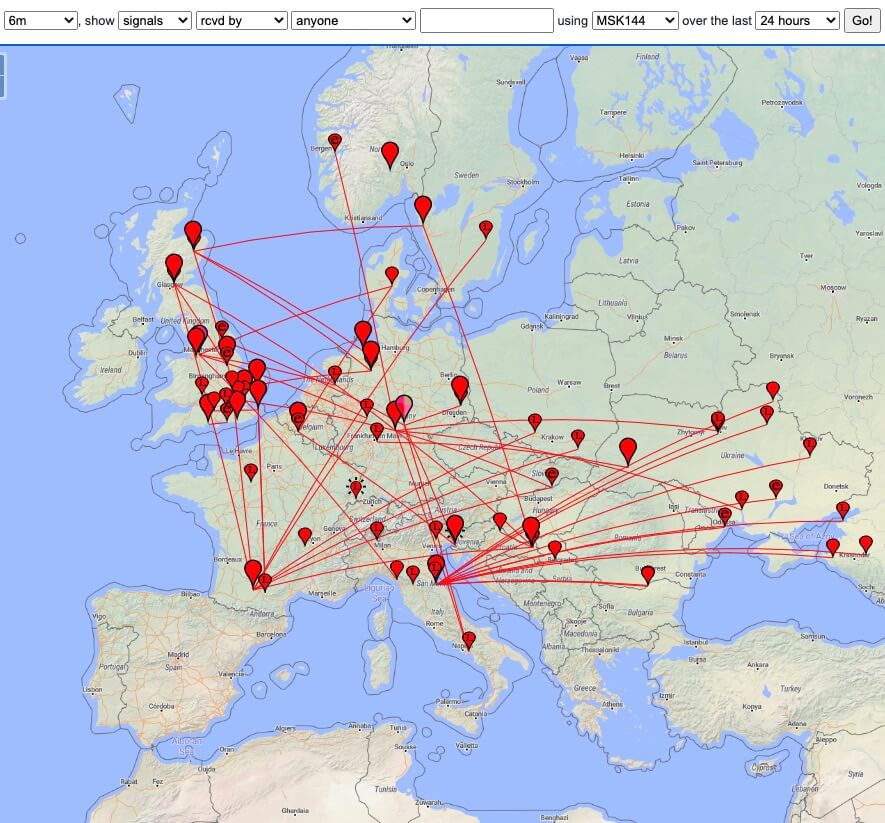
Last 15 minutes at 50.313 MHz 6m FT8

Last 15 minutes 70MHz 4m MSK144
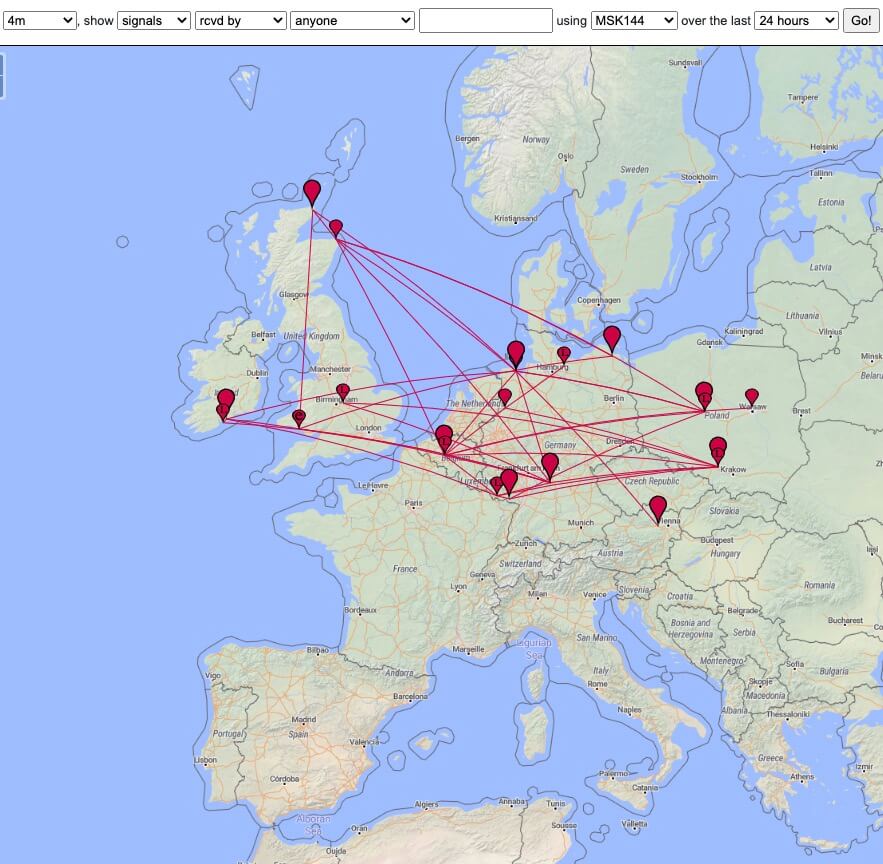
Last 15 minutes 70MHz 4m FT8

Last 15 minutes at 144.360 MHz 2m MSK144
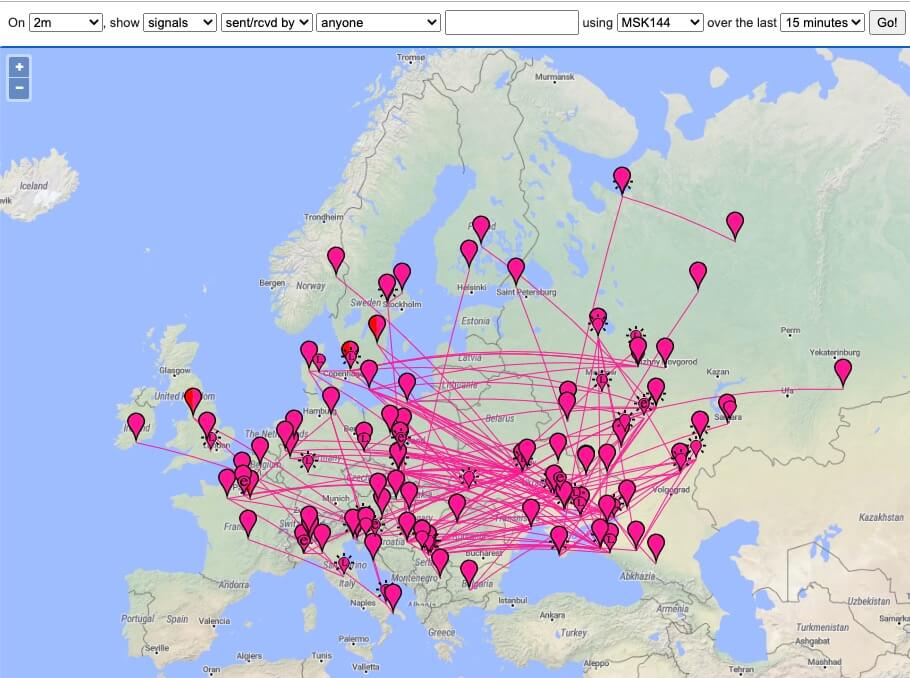
Last 15 minutes at 144.174 MHz 2m FT8
